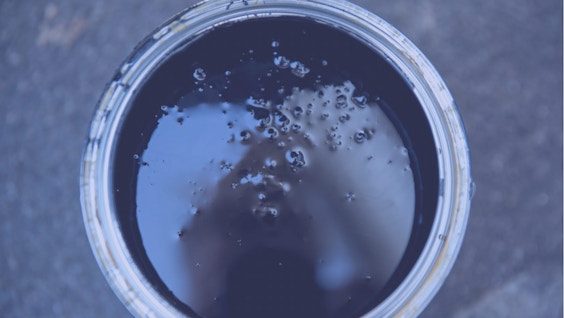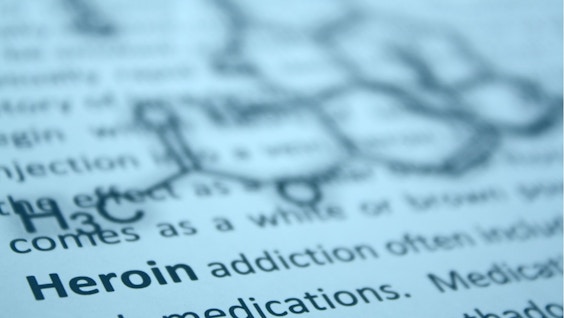
Withdrawal from Heroin
Last Updated: Fri, January 19, 2024Withdrawal symptoms usually last 5 to 10 days, with the peak being between days 1-3.
Some people suffer from Post-Acute Withdrawal Syndrome (PAWS) that can last for weeks, months, or even years. PAWS symptoms include fatigue, depression, anxiety, irritability, and insomnia.
Withdrawal severity varies with the amount and duration of heroin use. The severity of withdrawal also varies from person to person.
Heroin Withdrawal Symptoms
The following symptoms can range from mild to severe, including:
-
Nausea
-
Increased agitation
-
Depression
-
Anxiety
-
Sweating
-
Shaking
-
Abdominal pain
-
Muscle spasms
-
Craving for heroin
It’s important to note the cravings because, heroin rewires the brain to have the same response to heroin as the body naturally does to hunger. Your body treats the drug like it is an actual need; you become dependent on the substance.
Heroin Withdrawal Timeline
Heroin withdrawal is not the same for everyone.
During an average withdrawal, this is what a user can expect:
First 24 Hours: Because symptoms usually start 6-12 hours after your last dose, the symptoms experienced in the first 24 hours range from mild to moderate. Users tend to experience nausea, vomiting, diarrhea, restlessness (and subsequently fatigue), insomnia, fever, sweating, chills, anxiety, restless legs, and goosebumps. In addition, cravings make it extremely difficult to focus on anything else.
Days 1-3: This time frame is usually when the withdrawal symptoms are at their peak and therefore the most severe. This includes everything addressed in the first 24 hours, but users can also experience depression, hypertension, rapid heart rate, bone aching, muscle spasms, abdominal cramping, as well as increased anxiety, trouble sleeping (insomnia), and depression.
Days 4+: This is when the symptoms tend to peter out, usually ranging from mild to moderate. The vomiting usually stops, but the nausea is still present, as well as abdominal pain and cramps. There may be sweats, chills, and bone aches, fatigue, and continued insomnia.
Withdrawal is not life-threatening, but depression can be. During heroin withdrawal, it’s common for many people to experience depression. This is why it’s recommended to confide in friends, family members, or doctors if you plan on quitting outside of a treatment center. Don’t go through withdrawal alone.
Heroin Treatment
Many people recommend treatment centers to endure heroin withdrawal. It’s challenging enough to fend off the cravings, let alone the withdrawal symptoms that go along with it. In reality, 7-10 days of withdrawal are not that long, but it can feel like forever when you’re going through it. When you pair the cravings with all the withdrawal symptoms, many people relapse. For this reason, residential detoxification is needed to get through withdrawal, unless you are going onto buprenorphine.
Many treatment centers offer medical detoxification to get through withdrawal. Detox typically starts before withdrawal sets in – prior to the six hour mark from your last dose. Medical detox involves a combination of medication and therapy to help curb the effects of withdrawal while heroin leaves your body. Throughout the entire process, staff monitor your physical well-being and vital signs to help keep you safe.
After the initial detox process, most facilities provide treatment to help you stay sober.
Drugs to Treat Heroin Withdrawal
One of the biggest challenges for heroin addicts to overcome during withdrawal is pain. Heroin suppresses pain receptors in the brain and increases dopamine. When detoxing from heroin however, even feeling “normal” can feel painful. Because heroin is an opioid (pain reliever), many assume it’s hopeless to be given drugs to help with pain, when that’s what they’re detoxing from, however this is not the case.
There are several drugs that can be used to help someone detox and recover from opioids:
-
Buprenorphine
-
Methadone
-
Naltrexone
The Food and Drug Administration (FDA) has approved buprenorphine to be used for opioid withdrawal and treatment. Buprenorphine comes many forms, including Bunavail, Suboxone, and Subutex. Buprenorphine is generally not addictive, although taking this medication does cause physiological dependence. Buprenorphine suppresses withdrawal symptoms and craving, making you feel normal. Your prescriber can give you up to a month’s supply at a time to take at home.
Buprenorphine works well for most, but not all people addicted to opioids. Some heroin users will use buprenorphine alternating with heroin to treat their withdrawal symptoms. Because buprenorphine does not create a significant high, some heroin users are tempted to sell their buprenorphine on the streets to purchase heroin. Buprenorphine works best when coupled with addictions treatment and people actively work on their recovery by doing things such as going to recovery meetings.
Methadone is the most effective treatment for opioid use disorder. Methadone is a long acting opioid like heroin. Its effects last for about 24. Methadone takes away cravings and withdrawal symptoms. After getting use to it, methadone does not cause euphoria. Most people on methadone are able to lead normal lives. Sometimes methadone can cause apathy and fatigue. It is also dangerous if you drink, take sedatives, or use heroin or other narcotics while on methadone. It can cause overdose and death. The other drawback of methadone is that you have to go every day to a methadone maintenance clinic to get your daily dose.
Naltrexone is the third medication option for opioid use disorder. Naltrexone blocks the mu opioid receptor, making it essentially impossible to get high on heroin. Since you know getting high is not an option while naltrexone is in your system, naltrexone indirectly reduces cravings. You have to go through withdrawal and get all opioids out of your system before you can go on naltrexone. Naltrexone comes in a long-acting injectable form called Vivitrol that you can receive every four weeks. The injection is more effective than the pill form because you are insured of having the medication in your system for four weeks.
These medications are extremely helpful in recovering from heroin. They increase one year recovery rates from about 10% to as high as 80%. You should strongly consider one of these medications for getting sober.
Resources
I Am Sober is a free app that helps you get some control back in your life.




